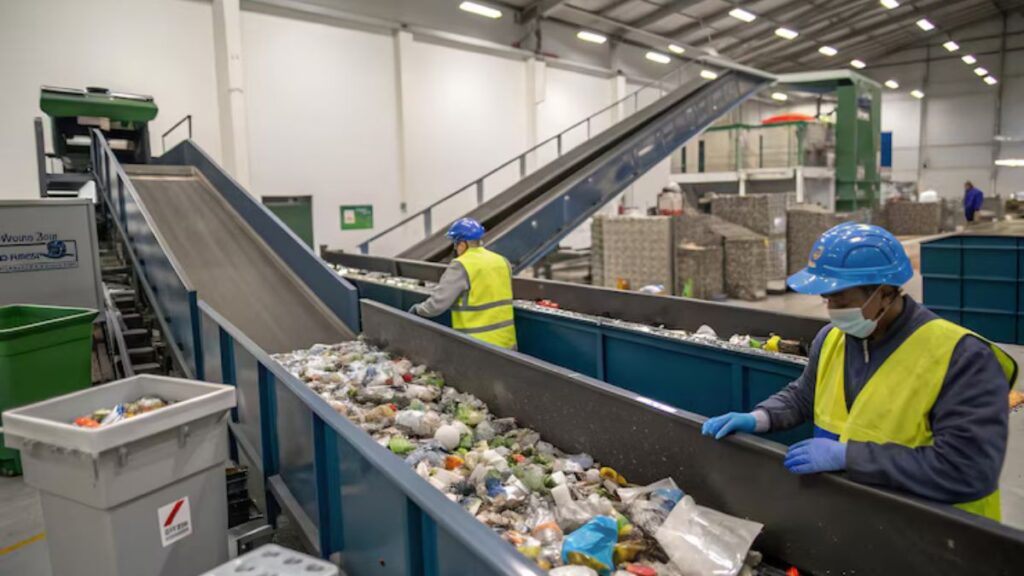Intro to Scrap Metal Recycling
Scrap metal recycling isn’t just for large factories or specialized businesses—it’s a practical, accessible solution for virtually anyone looking to reduce waste and gain value from items that would otherwise end up in landfills. Whether it’s an old bicycle frame, a worn-out appliance, or copper wiring left over from a home project, these items still have plenty of life left in them if properly recycled. The process is straightforward: gather up your unwanted metal items, sort them, and transport them to a recycling facility. Even those with limited knowledge or equipment can make meaningful contributions to this growing movement, benefiting both their finances and their communities.
When people stop to consider what can metal be used for after it has been recycled, it’s impressive to see its nearly endless new functions. Through advanced smelting and refining, used metals are given a second life as automotive parts, electronics, food containers, building frames, and more. This practice embodies the essence of the circular economy, where resources are conserved and repurposed rather than discarded. It also demonstrates how individuals and businesses alike can play an active role in supporting not only sustainability but also domestic industries that rely on recycled materials.
Economic Perks of Scrap Metal Recycling
There’s real financial potential in recycling scrap metal. Unlike many other recyclables, scrap metal is almost always accompanied by a payout. Individuals cleaning their garages, construction crews managing job site waste, or small business owners upgrading equipment often discover they’re sitting on unexpected cash value. The price you receive depends on the type of metal and its current market rate, which can fluctuate daily. For example, non-ferrous metals like copper and aluminum tend to fetch higher prices than ferrous metals due to their consistent demand and value in manufacturing.
From a broader perspective, the U.S. Environmental Protection Agency notes that recycling metals can result in energy savings of up to 74% for materials like steel compared to using virgin resources. These efficiency gains directly affect the whole supply chain. Manufacturers pay less for raw materials, meaning consumers see lower prices, and local communities benefit from job creation in collection, sorting, and processing roles. Whether supplementing personal income or improving a small business’s bottom line, metal recycling is often a win-win scenario.
Environmental Benefits and Sustainability
Apart from financial gain, scrap metal recycling provides significant environmental benefits. Each year, millions of tons of metal are diverted from landfills thanks to the efforts of everyday recyclers. Instead of rusting away and occupying valuable space, these materials are cleaned, processed, and reintegrated into new products, reducing the excessive pressures placed on natural resources. For every ton of steel recycled, it’s estimated that 2,500 pounds of iron ore, 1,400 pounds of coal, and 120 pounds of limestone are conserved.
These savings are amplified across entire industries. Mining and refining processes require substantial amounts of energy and generate significant pollution. Recycling, on the other hand, lowers greenhouse gas emissions and reduces harmful runoff, providing a powerful tool in ongoing efforts to address climate change. Communities that prioritize recycling often experience cleaner air and water, as individual actions are connected to collective well-being.
Getting Started With Scrap Metal Recycling
Getting started with scrap metal recycling doesn’t require complicated systems or technical knowledge. Start with these manageable steps:
- Sort metals as you collect them: Use a magnet to distinguish between magnetic ferrous metals and non-magnetic non-ferrous types. This simple step maximizes payouts when you deliver to recycling centers.
- Know your local collection points: Find out where you can take your metals and what identification, if any, is required. Some facilities offer pickup services, especially for larger loads.
- Strip and clean items: Remove non-metallic attachments—such as plastics, rubber, or wood—from metal items. Recycling centers often pay more for materials that are clean and free from foreign substances.
- Track your recycling activity: Especially for businesses, keeping records of what, when, and how much is recycled helps streamline operations and identifies further opportunities for improvement.
Many individuals create a system at home or in the workplace with labeled bins or scheduled drop-off days, turning recycling into a simple habit rather than an occasional chore.
Key Types of Scrap Metals Worth Recycling
Multiple categories of scrap metals generate solid returns and are widely accepted at most recycling facilities. Aluminum, found in beverage cans, foil, gutters, and bike frames, is one of the most recyclable and valuable metals. Its lightweight nature doesn’t diminish its worth—recycling aluminum saves nearly 95% of the energy required to produce new material from raw ore. Copper, with its distinctive reddish-brown color, is highly valued in plumbing pipes, electrical wiring, and certain motors. Because it’s used in so many industries, copper prices remain strong.
Steel, which is easily detectable with a magnet, is commonly found in larger items such as appliances, car parts, and building beams. Brass and bronze, though less common, also bring good returns and are often found in musical instruments, plumbing fixtures, and art pieces. Cleaning and separating each metal from other attachments ensures faster processing at facilities and usually leads to higher payments.
Safety Tips and Best Practices
Whenever you collect and handle scrap metal, safety should take top priority. Gloves and eye protection are essential to prevent injuries from sharp or jagged edges. Long sleeves and sturdy work boots further minimize the risk of cuts and punctures, especially when handling larger pieces, such as sheet metal or machinery parts. Always be mindful of rust, as it can increase the chance of tetanus infection.
Don’t attempt to open sealed tanks, drums, or containers, as they may contain toxic or pressurized substances. Use the right equipment and lifting techniques to move heavy objects—strains and back issues can be avoided with careful practice. Work in a well-lit, clutter-free area to minimize hazards and prevent children and pets from entering collection and processing spaces. Most recycling centers will provide clear instructions; following their guidelines further reduces risk and streamlines your visit.
Scrap Metal Recycling In The News
The scrap metal industry is dynamic and influenced by both local and international events. Fluctuating commodity prices, trade regulations, and technological advances all affect the day-to-day operations of recyclers. As global supply chains undergo shifts, some metals may increase in value while others become more readily available. This creates new opportunities and challenges for individuals and small businesses seeking to maximize their returns.
Recent coverage has highlighted the increasing adoption of laws to curb the theft of valuable metals, the introduction of new recycling programs in several cities, and innovative solutions adopted by communities to boost recycling rates. Understanding these trends helps recyclers time their sales and adjust their collection efforts for maximum benefit.
Future Trends in Scrap Metal Recycling
The evolution of the recycling sector shows no sign of slowing down. Advancements in technology are making metal sorting smarter, faster, and more precise than ever. Artificial intelligence and robotics are being implemented in some of the biggest facilities to accurately separate metals by type and grade, cutting human error and contamination. For individuals and businesses, these changes promise quicker and potentially higher returns for recycled materials.
Additionally, new climate and sustainability regulations are pushing industries to rely more on recycled content in their manufacturing processes. Companies are actively seeking reliable sources of scrap metal to meet these objectives and ensure compliance. Community-driven recycling initiatives, meanwhile, continue to expand, offering more accessible collection points and educational resources. Adapting to these new trends positions small businesses and individuals to thrive within the recycling economy, while helping to build a more sustainable and resource-conscious future.





